![]()
![]()
![]()
Use LEFT and RIGHT arrow keys to navigate between flashcards;
Use UP and DOWN arrow keys to flip the card;
H to show hint;
A reads text to speech;
16 Cards in this Set
- Front
- Back
|
Define autograft
|
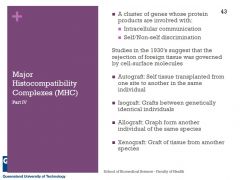
self tissue transplant
|
|
|
Define isograft
|
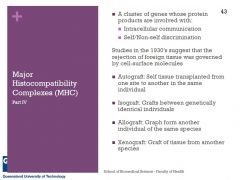
twin tissue transplant
|
|
|
Define allograft
|
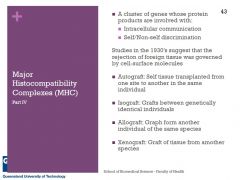
tissue transplant from another species
|
|
|
Define xenograft
|
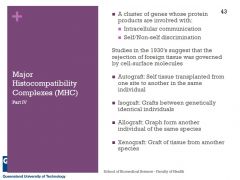
transplant from another species
|
|
|
Describe MHC molecule
|
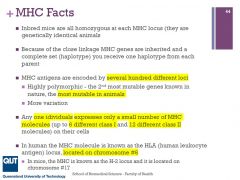
- inherited by parents
- highly polymorphic 6 x class I 12 x class 2 |
|
|
Where is the MHC/HLA located?
|
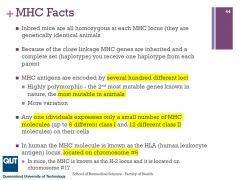
chromosome 6
|
|
|
What is located on the Class II MHC locus
|
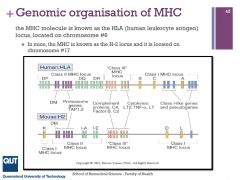
DP DQ DR
|
|
|
What is located on the Class I MHC locus?
|
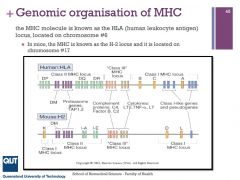
A B C
|
|
|
What are the gene products of Class I and Class II MHC
|
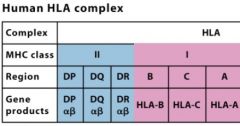
Class II - DP alpha beta, DQ ab, DR ab
Class I - HLA B, HLA A, HLA C |
|
|
Define class I MHC
|
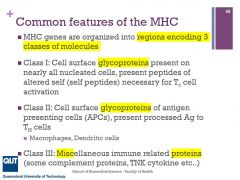
|
|
|
Define Class II
|

|
|
|
Which MHC class presents to CD4+ cells
|
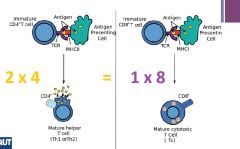
Class II
|
|
|
Which class MHC present to CD8+
|
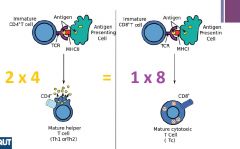
Class I
|
|
|
Describe class I MHC
|
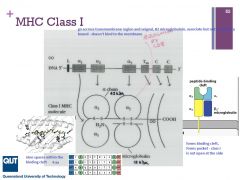
four regions, alpha 1 and 2 which form the peptide binding cleft. alpha 3 goes accross the membrane and signal. Beta 2 microglobulin is associated but does not bind to the membrane.
|
|
|
Describe the binding cleft in the MHC class I
|
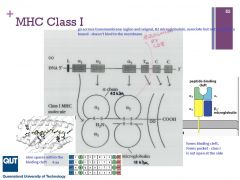
nine amino acids to recognise a pathogen. Positions 2 and 9 are anchor residues. 2 is the basement of the groove - and needs to be an aa of the right affinity, but may be just related whereas positions like aa 1 need to be a certain amino acid.
|
|
|
Describe the binding cleft for MHC class II
|
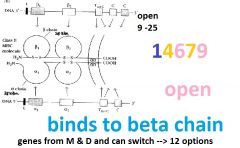
open on one side
can accept longer polypetptide chain 9 aa to 25 aa more binding pockets locations are 1,4,6,7,9 binding pockets bind down in the basement, creating a conformation which we think may induce a t cell response transmembrane and signal\ open binding cleft both sides go through transmemrane |

